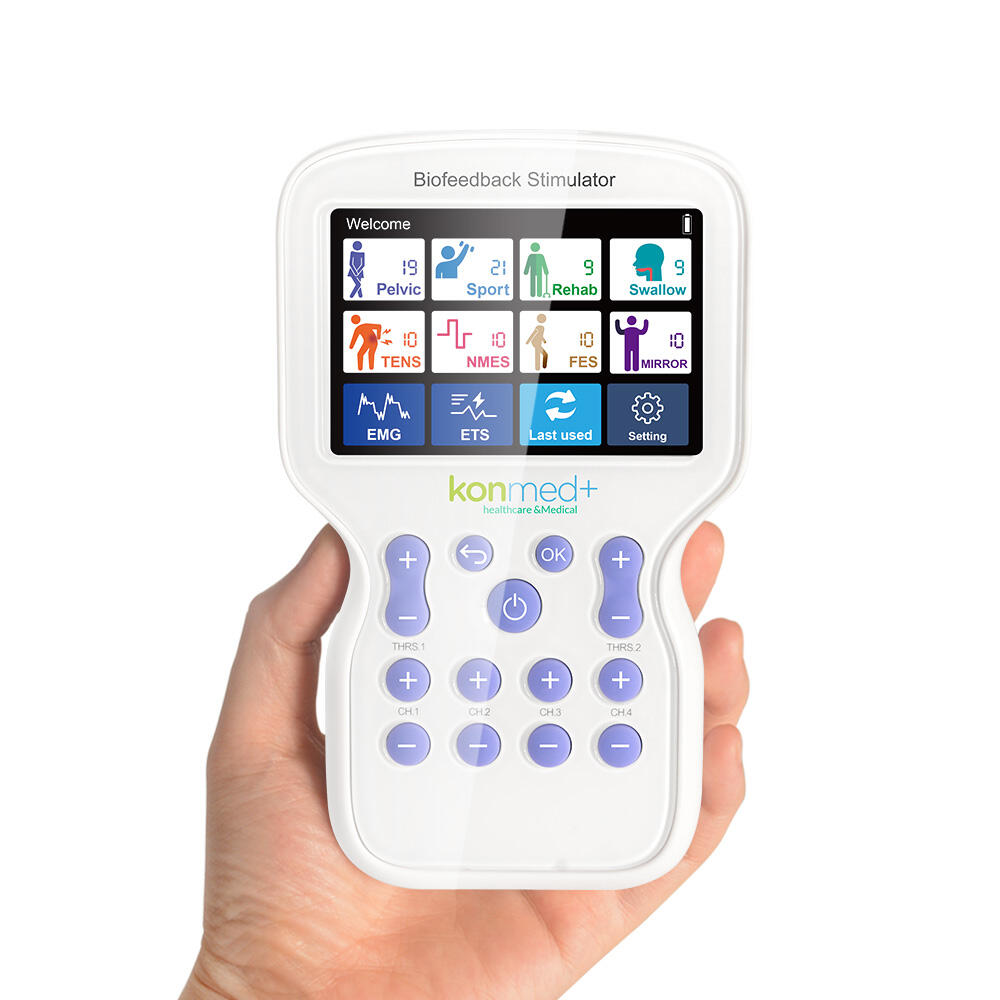Dans la compétition ultime des sports d'élite, la victoire se joue souvent sur les plus petits écarts. Lorsque la condition physique et la technique ont atteint leur maximum, qu'est-ce qui peut encore procurer un avantage décisif ? La réponse pourrait se trouver dans le cerveau de l'athlète cerveau .
La biofeedback, une technologie autrefois confinée aux centres de rééducation médicale, est devenue discrètement une « arme secrète » pour les athlètes d'élite et les meilleures équipes sportives. Elle n'est pas seulement un outil, mais une philosophie d'entraînement — utiliser des méthodes scientifiques pour soumettre des processus physiologiques inconscients au contrôle conscient, permettant ainsi d'atteindre une synergie parfaite entre esprit et corps.
Cet article explorera en profondeur comment le biofeedback révolutionne la manière dont les athlètes s'entraînent et se remettent d'un effort, vous aidant à comprendre cette technologie et à voir pourquoi elle est au cœur de l'avenir de la science du sport.
Partie 1 : Comprendre Biofeedback - Le « tableau de bord physiologique » de l'athlète
En termes simples, le biofeedback est un processus qui utilise des capteurs pour convertir des signaux physiologiques internes imperceptibles — tels que ondes cérébrales, fréquence cardiaque, tension musculaire, conductance cutanée et respiration — en un retour visuel ou auditif en temps réel.
Imaginez ceci : vous essayez de vous détendre, mais vous n'êtes pas sûr d'être vraiment détendu. Un équipement de biofeedback agit comme un « tableau de bord physiologique » de haute précision, vous permettant de « voir » clairement votre niveau de tension :
Lorsque votre fréquence cardiaque est trop élevée, la courbe à l'écran fluctue violemment.
Lorsque vos muscles sont tendus, vous entendez un son d'alerte strident.
Lorsque vous parvenez avec succès à entrer dans un état de concentration, vous voyez une animation agréable.
Ce processus permet aux athlètes de :
Accroître la conscience : Reconnaître le lien direct entre les pensées, les émotions et les états physiologiques (comme la tension musculaire, l'augmentation du rythme cardiaque).
Apprendre le contrôle : Grâce à une pratique répétée, apprendre à utiliser des techniques mentales (comme l'imagerie dirigée, la régulation de la respiration) pour réguler activement ces signaux physiologiques.
Atteindre l'auto-régulation : L'objectif ultime est de pouvoir mobiliser ces compétences afin de maintenir une performance optimale même dans des environnements de compétition sous haute pression, sans avoir besoin d'équipement.
Partie 2 : Améliorer la performance sur le terrain : quatre clés pour passer d'« bon » à « grand »
1. Optimiser l'état neural : entrer dans la « zone » ou l'état de flux
Technologie principale : biofeedback par électroencéphalographie (EEG), également appelé neurofeedback.
L'état de « flux » est le domaine idéal dont rêvent les athlètes : concentration élevée, action sans effort et perception altérée du temps. Le neurofeedback peut entraîner directement le cerveau à produire les ondes cérébrales associées à cet état.
Comment ça marche : Des capteurs surveillent votre activité cérébrale. Par exemple, dans les sports nécessitant une concentration calme (comme le tir, le putting au golf, les lancers francs), le système vous apprend à améliorer Les ondes Rythme Sensorimoteur (SMR) associées à une concentration détendue, tout en réduisant les ondes de haute fréquence Bêta liées à l'anxiété et à la distraction.
Exemple d'application : Un tireur apprend à maintenir un état cérébral calme malgré le bruit, assurant une stabilité absolue au moment de l'appui sur la détente. Une équipe de basket-ball utilise la neurofeedback pour entraîner la concentration des joueurs, améliorant ainsi la précision des lancers francs lors des moments critiques.
2. Maîtriser la synergie cardio-respiratoire : Maximiser l'efficacité énergétique
Technologie clé : Biofeedback de la variabilité du rythme cardiaque (HRV).
La HRV fait référence aux variations subtiles de l'intervalle de temps entre les battements cardiaques. C'est un indicateur reconnu de l'équilibre du système nerveux autonome (l'équilibre entre le système sympathique « combat » et le système parasympathique « repos »). Une HRV élevée indique un corps plus adaptable, qui se remet mieux et est plus résistant au stress.
Comment ça marche : Grâce à des exercices de respiration guidée, les athlètes apprennent à synchroniser leur respiration avec leur rythme cardiaque, maximisant ainsi la variabilité de la fréquence cardiaque (HRV). Cela s'obtient souvent via une interface semblable à un jeu vidéo dans laquelle vous devez « diriger » une onde ou un ballon à l'écran en respirant lentement, profondément et de manière rythmée.
Exemple d'application : Un coureur de fond utilise l'ajustement du rythme respiratoire pour récupérer rapidement de la douleur liée au franchissement du seuil anaérobie pendant une course. Un joueur de football utilise une courte séance de formation à la HRV pendant la mi-temps afin de réduire rapidement son rythme cardiaque et conserver de l'énergie pour la seconde mi-temps.
3. Atteindre un contrôle musculaire précis : l'équilibre parfait entre contraction et relâchement
Technologie clé : biofeedback par électromyographie (EMG).
La tension musculaire inutile représente un énorme gaspillage d'énergie et peut perturber la fluidité des mouvements techniques. Le biofeedback par EMG fournit une mesure précise du niveau de tension dans des groupes musculaires spécifiques.
Comment ça marche : Des capteurs sont placés sur les muscles ciblés (par exemple, les quadriceps d'un sprinter ou le trapèze d'un nageur). Les athlètes apprennent à activer efficacement les muscles requis pendant l'effort et à les relâcher complètement lorsqu'ils ne sont pas nécessaires.
Exemple d'application : Un cycliste découvre que ses muscles des jambes restent excessivement tendus pendant la phase non motrice du pédalage. Grâce à l'entraînement, il apprend à se détendre complètement pendant certaines parties de la rotation de pédalage, améliorant ainsi considérablement son endurance. Un joueur de tennis corrige une tension inutile au niveau de l'épaule lors de son service, augmentant la vitesse de la balle et prévenant les blessures à l'épaule.
4. Gestion de l'anxiété compétitive : transformer la pression en puissance
Technologie de base : activité électrodermale (EDA/SGR) et biofeedback respiratoire.
Les nerfs avant la compétition sont normaux, mais une anxiété excessive peut entraîner un « blocage ». La conductance cutanée peut être une mesure extrêmement sensible du niveau d'activation émotionnelle.
Comment ça marche : Les athlètes s'exposent à des situations simulées de forte pression (par exemple, visionner une vidéo de leurs propres erreurs passées) et apprennent à réduire leur conductance cutanée grâce à la reformulation cognitive et à des techniques de respiration, tout en maintenant un état de calme.
Exemple d'application : Une gymnaste sur la poutre, dès qu'elle perçoit les premiers signes d'une anxiété croissante, applique immédiatement un schéma respiratoire prédéfini pour exécuter sa routine en douceur. Un plongeur utilise ses compétences en biofeedback avant un saut pour transformer son nervosité en excitation concentrée.
Partie 3 : Accélérer la récupération physique : le pont scientifique entre « fatigue » et « régénération »
Les effets de l'entraînement se produisent pendant la phase de récupération. L'application du biofeedback durant cette phase est tout aussi puissante.
1. Activation du système nerveux parasympathique : amorcer une récupération profonde
Après un entraînement intense, l'organisme doit passer du mode « combat » dominé par le système nerveux sympathique au mode « réparation » dominé par le système nerveux parasympathique. La biofeedback de la variabilité du rythme cardiaque (HRV) est l'un des outils les plus efficaces pour faciliter ce passage.
Pratique : Effectuer 10 à 15 minutes de respiration guidée par la VRC après une séance d'entraînement peut significativement réduire la fréquence cardiaque au repos, favoriser la circulation sanguine, acheminer l'oxygène et les nutriments vers les muscles endommagés, et accélérer l'élimination des déchets métaboliques.
2. Optimiser la qualité du sommeil : l'outil ultime de réparation corporelle
Le sommeil est la méthode de récupération ultime. Le biofeedback peut aider les athlètes à identifier et améliorer les facteurs physiologiques affectant le sommeil.
Pratique : L'utilisation d'appareils de biofeedback de la VRC ou de neurofeedback pour une séance de relaxation avant le coucher peut aider à « calmer » un esprit agité, réduire la latence du sommeil et augmenter la durée du sommeil profond.
3. Gestion de la douleur et contrôle de l'inflammation
En entraînant le cerveau à réguler la perception de la douleur et en utilisant des techniques de relaxation pour améliorer la circulation sanguine locale, le biofeedback peut servir de complément pour gérer les douleurs post-entraînement et les inflammations mineures.
Partie 4 : Comment intégrer le biofeedback dans votre plan d'entraînement ?
Évaluation initiale : Mesurez d'abord vos principales métriques physiologiques (VHR, EMG, EDA) au repos, sous charge standard et sous charge maximale afin d'établir une référence personnelle.
Phase d'acquisition des compétences : S'entraîner dans un environnement calme et sans distraction, au moins 3 à 4 fois par semaine pendant 20 à 30 minutes par séance. L'accent est mis ici sur la maîtrise des compétences de contrôle, et non sur la pratique en état de fatigue.
Phase d'application des compétences : Une fois compétent, commencez à appliquer ces compétences pendant l'échauffement, entre les intervalles d'entraînement ou dans des scénarios de compétition simulés. Par exemple, pratiquez la respiration basée sur la VHR entre les séries lors d'un entraînement de force.
Phase d'automatisation des compétences : L'objectif ultime est de déployer automatiquement ces compétences pendant une véritable compétition, sans y penser consciemment, en les intégrant à votre instinct sportif.
Note importante : Bien que de nombreux dispositifs de biofeedback grand public soient disponibles, il est fortement recommandé de commencer sous la supervision d'un psychologue du sport ou d'un kinésithérapeute formé au biofeedback afin de s'assurer que vous êtes sur la bonne voie et d'éviter tout malentendu ou l'acquisition de mauvaises habitudes.
Conclusion : Adopter la nouvelle ère de l'entraînement intégré corps-esprit
Le biofeedback marque un changement de paradigme dans l'entraînement sportif : passer d'une focalisation exclusive sur le corps physique externe à une exploration approfondie du monde interne psychophysiologique. Il responsabilise les athlètes, faisant de chacun un scientifique et un ingénieur de son propre corps et de son esprit.
Il ne s'agit plus seulement de « s'entraîner plus fort », mais de « s'entraîner plus intelligemment ». En écoutant les signaux subtils que leur corps envoie et en apprenant à y répondre, les athlètes peuvent franchir les paliers de performance, prolonger leur carrière sportive et entrer sur le terrain avec un calme et une confiance sans précédent.
L'avenir appartient aux athlètes capables d'intégrer au mieux corps et cerveau. La biofeedback est le pont vers cet avenir.





